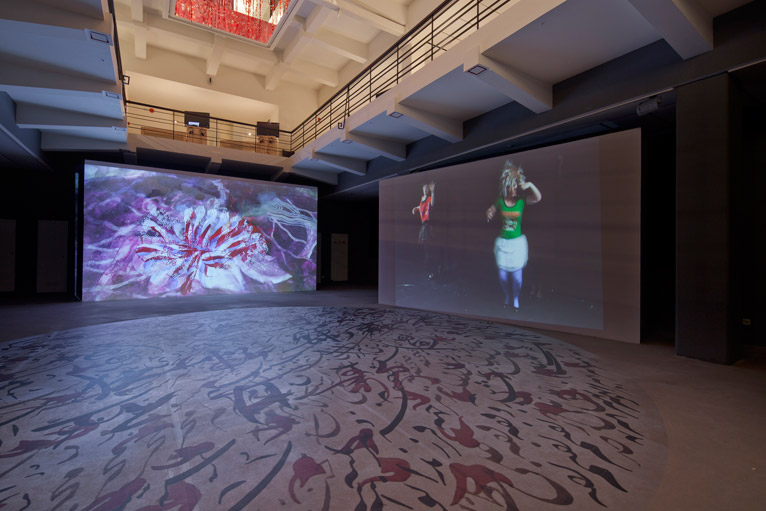BY DAY BY NIGHT: OR SOME (SPECIAL) THINGS A MUSEUM CAN DO
| December 1, 2010 | Post In LEAP 6

As its name implies, “By Day By Night” is different from other exhibitions: it works round the clock, day and night. As the second part of its name, “Or Some (Special) Things A Museum Can Do,” suggests, the role of the museum for this exhibition has also expanded to include more functions than for past exhibitions. No, the exhibition is not actually open to the public from sunset through to sunrise; rather, during the day, the works are displayed in the traditional sense, and then in the evening, the museum’s second-floor gallery is converted into a forum and screening room. On each of nine weekend nights throughout the exhibition (Curator Hou Hanru called it “Night School”), eighteen different seminars, dialogues, workshops, and performances were hosted, and twenty-seven different movies, all recommended by the nine participating artists, were screened. The reality is that, as the case has always been, written descriptions of the exhibition will not center around these after-hours events; rather, the focus will still be on those works that are “stable, fixed, and spectacular.” The reason for this is obvious: what is fixed, finished, and concrete is far easier to describe and grasp than what is liquid, ongoing, incomplete. In that sense, this may be the rare exhibition that truly requires a physical visit, and for which a review like this may be inadequate.
According to Hou Hanru, these works are a product of the nine artists’ “investigation into and exploration of Shanghai, the Rockbund Art Museum, their past and present.” These included: neon labyrinths in the main gallery and on the exterior walls of the museum (Pedro Cabrita Reis); the audience seats wrapped in counterfeit Louis Vuitton leather matched with cheap retro print wallpaper, gaudy acrylic beads, and three crystal chandeliers brought over from private homes neighboring the museum (Choi Jeong Hwa); a film shot by an American in Shanghai, Illusion/Heaven (Sam Samore), covering “daily life, madness, love, and Shanghai fables;” a body of ink animation and painting installation works (Sun Xun); a video installation comprised of elements such as miniature painting, Urdu calligraphy and dance (Shahzia Sikander and Du Yun); a photologue and written account of an artist, his made-in-China ceramic toad, and their travels by train from Sofia to Shanghai (Nedko Solakov); an installation piece combining texts and images mocking high French style (Zhou Tiehai); and a series of works entitled Image and Sound Museum (Tu Wei-cheng).
Among these works, the one work that truly “investigates and explores Shanghai” is Image and Sound Museum. Taiwanese artist Tu Wei-cheng’s project is both fascinating and wildly ambitious; formally, it parodies the classic museum or any other traditional viewing space. The works are positioned on four floors of the Rockbund museum, each with a different focus. The second floor deals with the notion of “image,” exhibiting genuine antiques, sham antiques, and fabricated cultural relics, all collected from Shanghai’s second-hand markets and marked with falsified date tags. The fourth floor takes lines of poetry praising Shanghai, converts them into copperplate-engraved braille, and then converts them once again into music-box sheet music. The fifth floor contains small photographs of the neighborhood surrounding the museum shot by Tu before its construction; the audience can accordingly seek out the origins of the shots, take photographs as proof of their findings, and exchange them for souvenirs offered by the artist. Perhaps unfortunately for the exhibition, it almost seems that if Tu were to expand the scope of this single project, his work alone could have embodied the expressed curatorial intention.
It is curator Hou Hanru’s hope that this exhibition will help the Rockbund Art Museum to grow gradually into “a birthplace for art collections; an arena for creation and performance as one; and a platform for social dialogue.” But this first depends on the influx and voices of people attending the exhibition’s “Night.” It also depends to a large degree on factors beyond the reach of the exhibition itself. In this regard, I’m not optimistic. Hu Yuanxing

